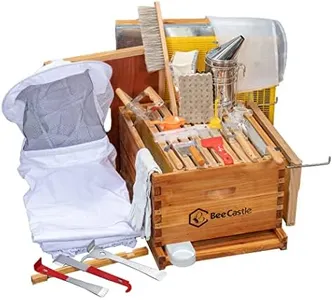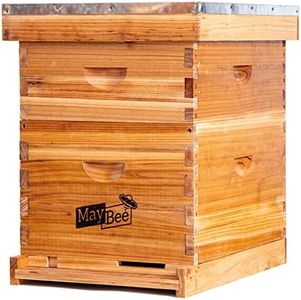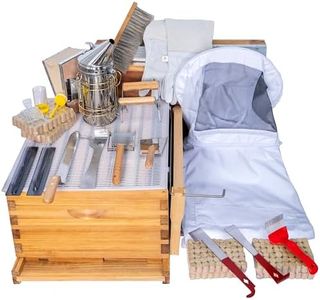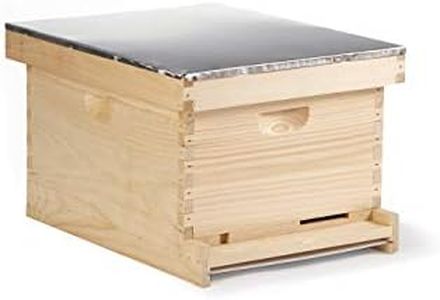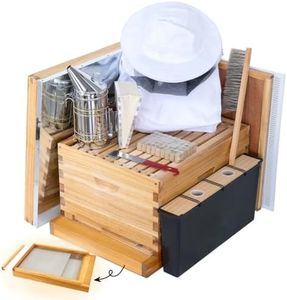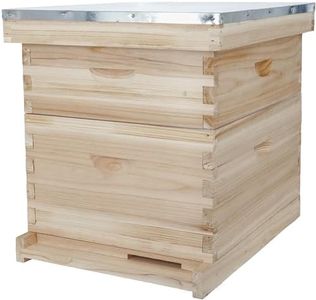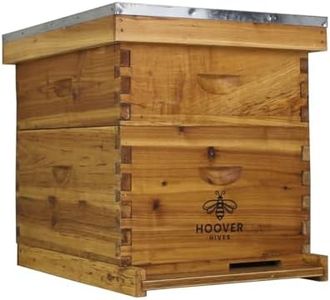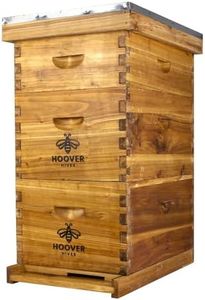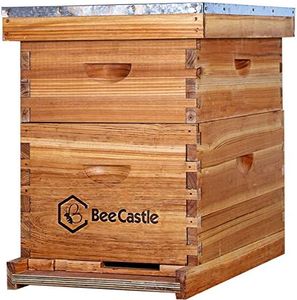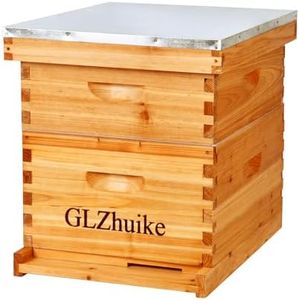We Use CookiesWe use cookies to enhance the security, performance,
functionality and for analytical and promotional activities. By continuing to browse this site you
are agreeing to our privacy policy
10 Best Bee Hive Kits
From leading brands and best sellers available on the web.Buying Guide for the Best Bee Hive Kits
Choosing the right bee hive kit is an exciting step for both beginner and experienced beekeepers. The perfect kit should suit your goals, local environment, and experience level, while making bee care safe and enjoyable. Start by considering what you want to achieve (like honey production or supporting pollination), how much time you can devote, and how confident you are in handling bees. Understanding the differences in hive types, materials, capacity, and ease of use will help you select a kit that enables both you and your bees to thrive.Hive TypeThe hive type determines the basic structure and the way bees are managed. The most common types are Langstroth, Top Bar, and Warre hives. Langstroth hives are modular, allowing easy expansion and honey harvesting, making them ideal for beginners and those interested in maximizing honey yield. Top Bar hives are known for more natural comb building and simpler management, suitable for hobbyists who prioritize bee welfare and less frequent honey collection. Warre hives blend simplicity and natural beekeeping but require slightly more attention to vertical space. Consider your priorities and local community norms; if you want a proven, widely supported system with lots of learning resources, Langstroth is a safe bet, while Top Bar and Warre are ideal if you value simplicity and bee-centric practices.
MaterialThe material of a hive kit affects its durability, insulation, and weight. Most kits are made from wood (like pine or cedar), but you may also find plastic or polystyrene options. Wooden hives offer natural insulation and look traditional, while cedar wood is particularly weather resistant. Plastic or polystyrene hives are light and well-insulated but may not be as robust over time. Choose wood if you want longevity and a natural environment for bees, but consider plastic if you need something lightweight and easy to sanitize.
Included ComponentsBee hive kits differ in what they include—some are basic shells, while others come with frames, foundations, feeders, smokers, protective gear, and more. Kits with more components help beginners get started without needing to buy too many extra items, ensuring you have all essentials ready for your bees’ arrival. However, experienced beekeepers might prefer minimal kits to customize with their preferred equipment. Think about your experience level and how quickly you want to set up; beginners generally benefit from more comprehensive kits.
Hive CapacityHive capacity refers to the number of bees or frames your hive can hold. It influences how much honey you can harvest and the size of the colony you can support. A larger hive can host bigger colonies and produce more honey but requires more upkeep and space. Smaller capacities are easier to manage and good for beginners or those with limited space. Reflect on how much time you can devote, the size of your backyard, and your production goals before choosing.
Ease of Assembly and UseBee hive kits vary in how easy they are to assemble and maintain. Some come pre-assembled or with clear instructions and pre-drilled holes, making setup quick for first-timers. Others require more manual work or skill with tools. Consider your own comfort level with DIY tasks and the amount of time you have; if you’re not handy, look for kits tagged as ‘easy assembly’ or with full instructions included.
Weather ResistanceWeather resistance is key for the hive’s longevity and your bees’ health, as hives exposed to rain, sun, and temperature swings can degrade or put stress on the colony. Some hives have special coatings or construction details to withstand different climates. If you live in an area with extreme weather, prioritize hives made of weather-resistant materials like cedar or with added treatments. Match your hive’s resilience to your local environment to protect your investment and your bees.

